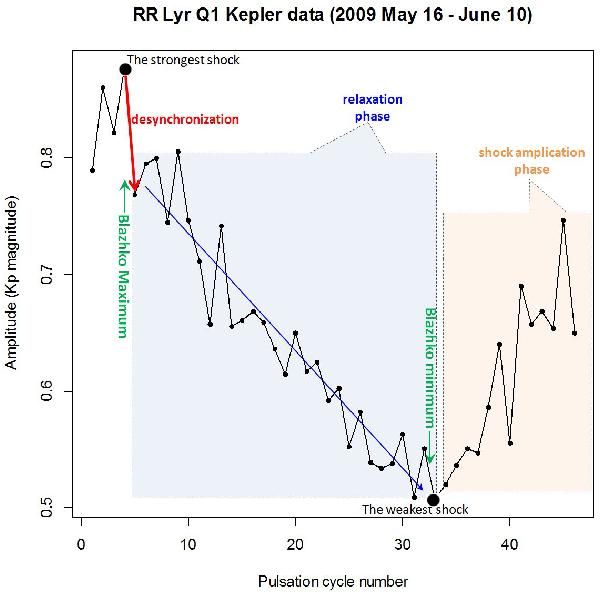Fig. 2

Evolution of the light curve amplitude versus the pulsation cycle number during the first quarter of Kepler observations (Q1) conducted between 2009 May 16 and June 10. The strongest main shock occurs at the Blazhko maximum, the weakest at the Blazhko minimum. The sudden desynchronization of the photospheric layers occurs just after the strongest shock. A new synchronization of these layers would arise after a relaxation phase of the photosphere at the Blazhko minimum. The shock intensity would be amplified after the Blazhko minimum until the Blazhko maximum. These processes are not regular but they sometimes suffer high random fluctuations caused by physical processes of very different nature (shocks, gravitationnal infalling motion, radiative losses, etc.), occurring in the atmosphere.
Current usage metrics show cumulative count of Article Views (full-text article views including HTML views, PDF and ePub downloads, according to the available data) and Abstracts Views on Vision4Press platform.
Data correspond to usage on the plateform after 2015. The current usage metrics is available 48-96 hours after online publication and is updated daily on week days.
Initial download of the metrics may take a while.


